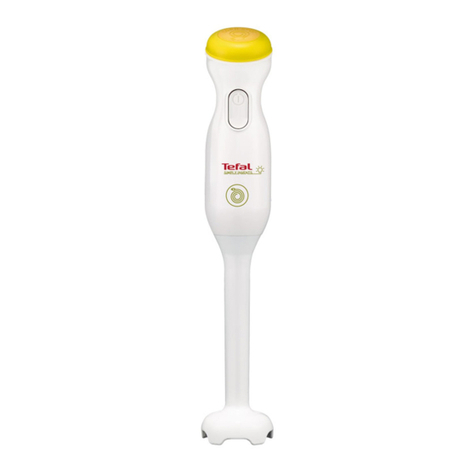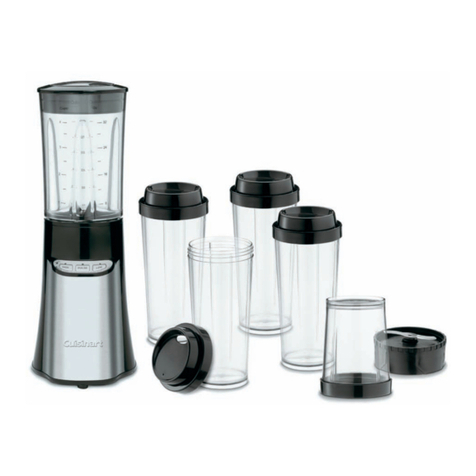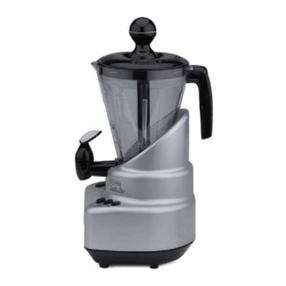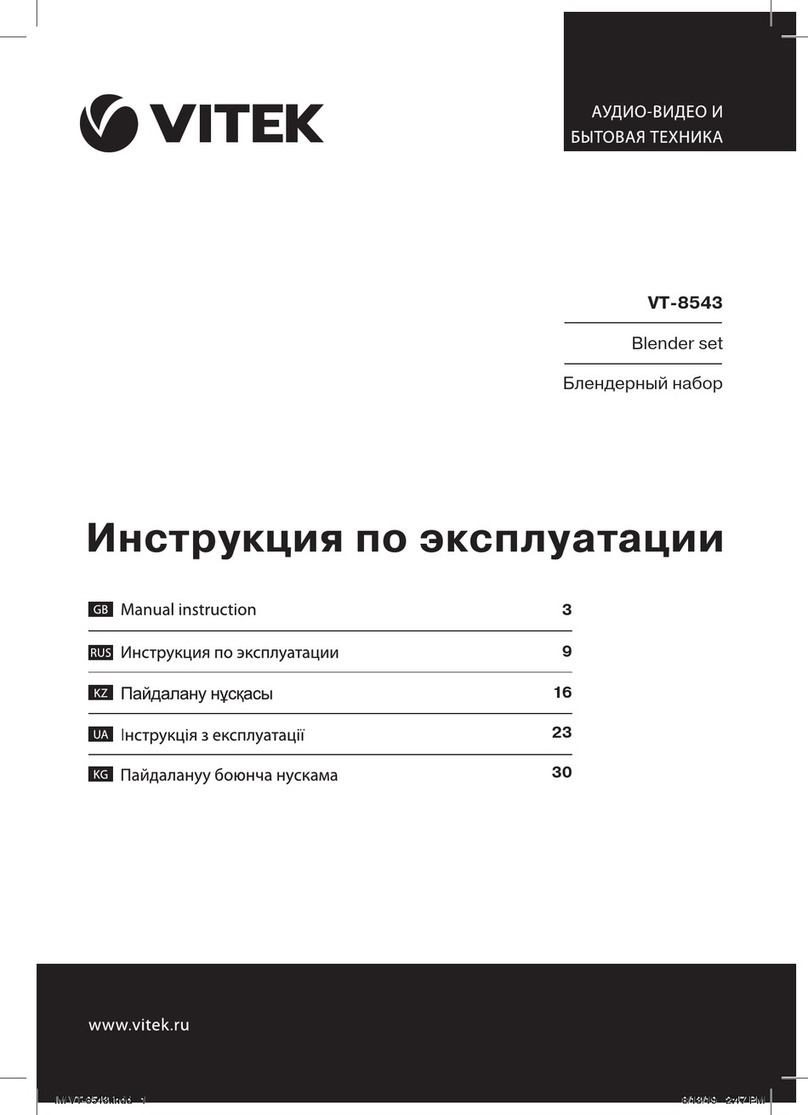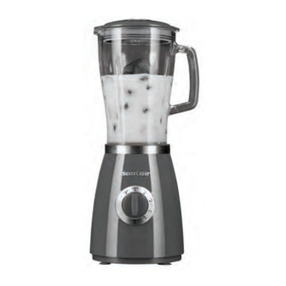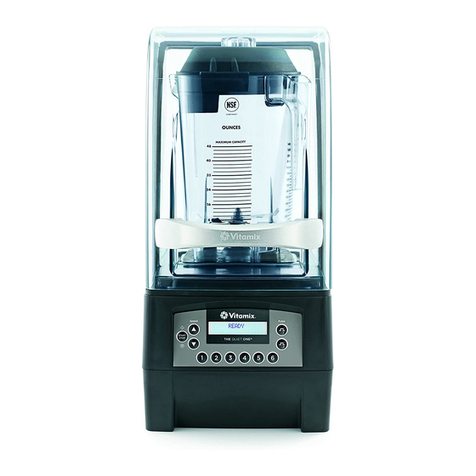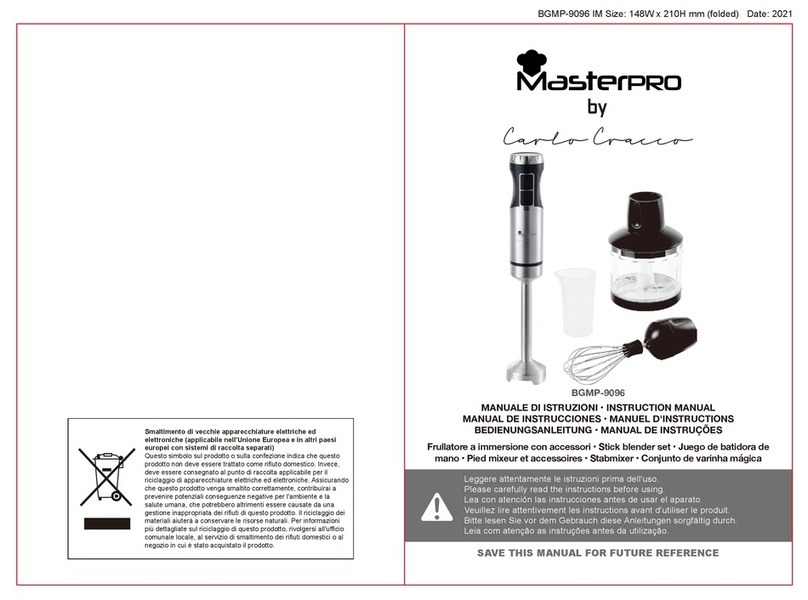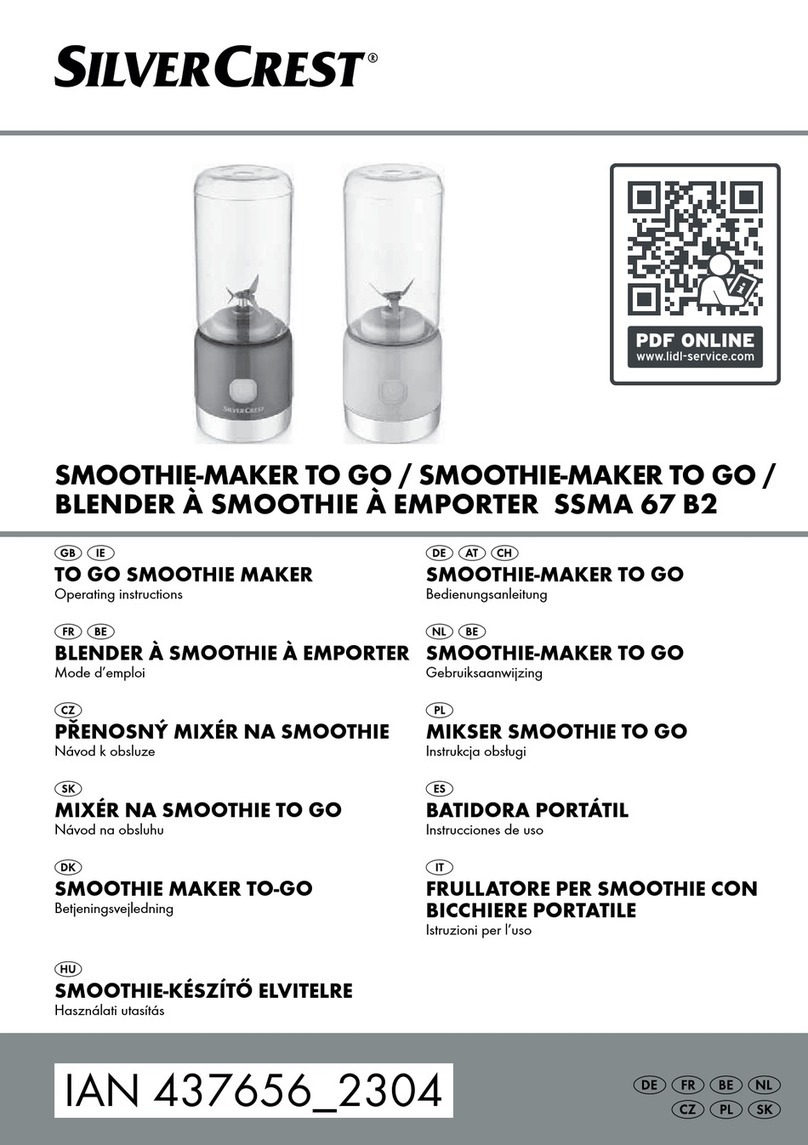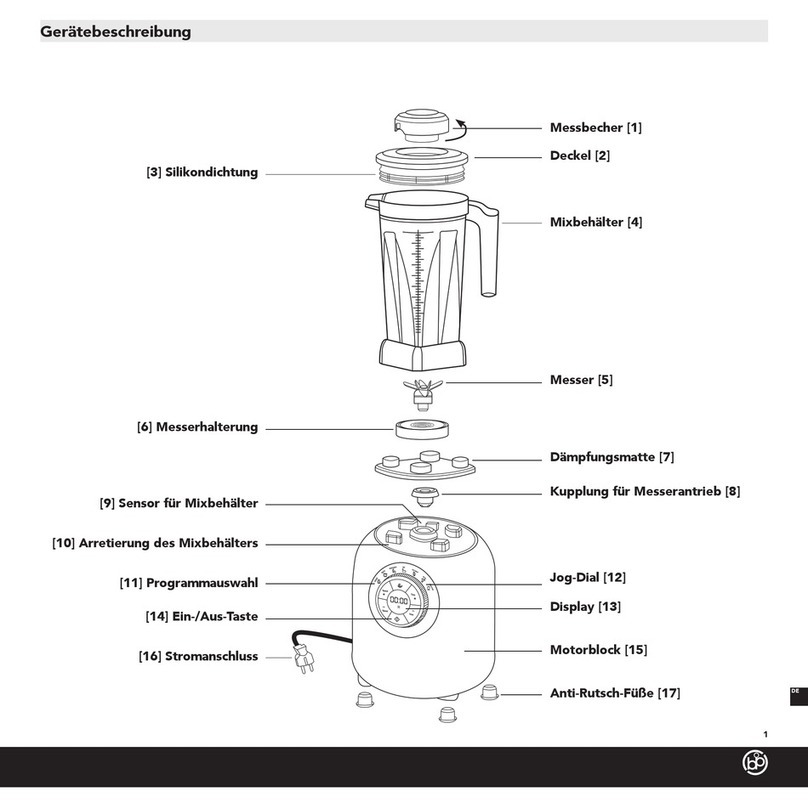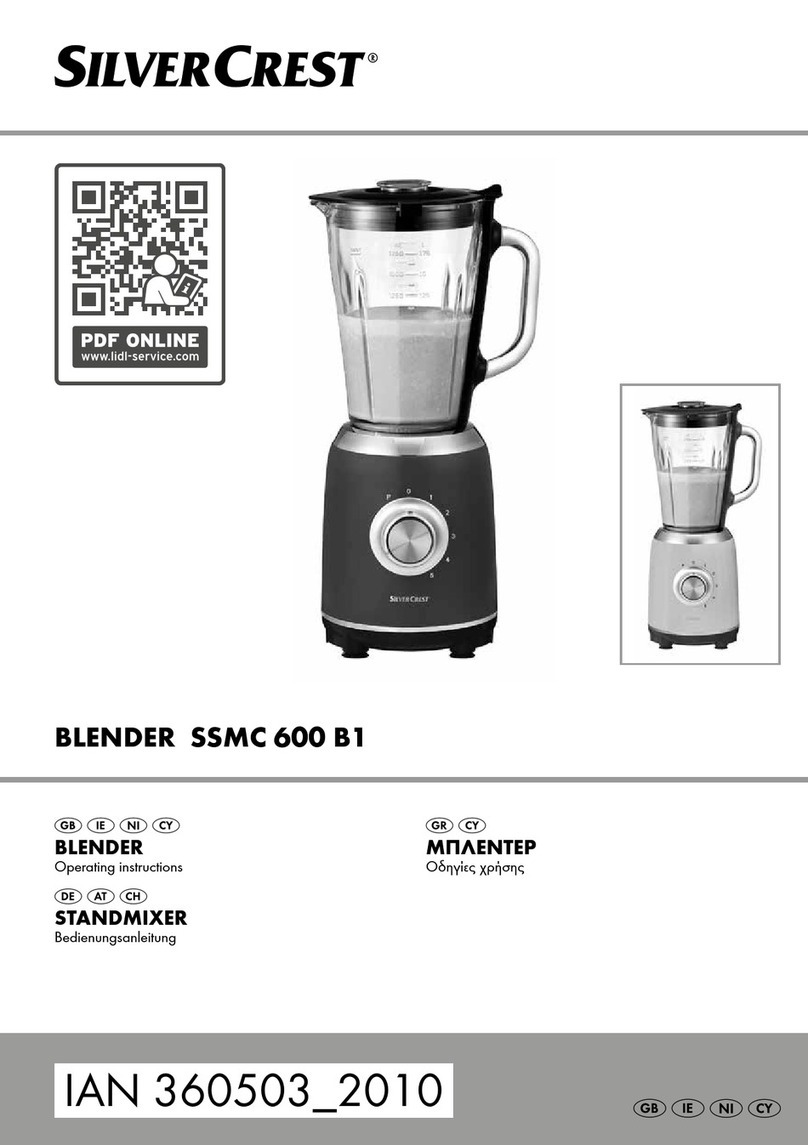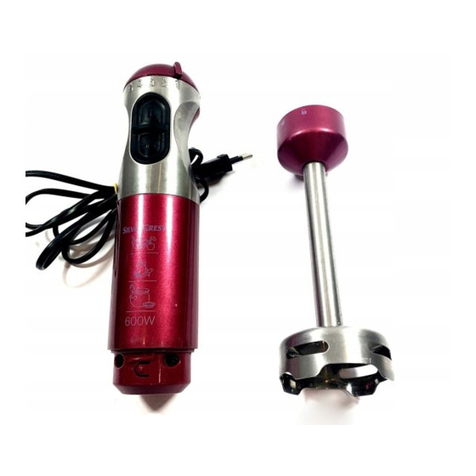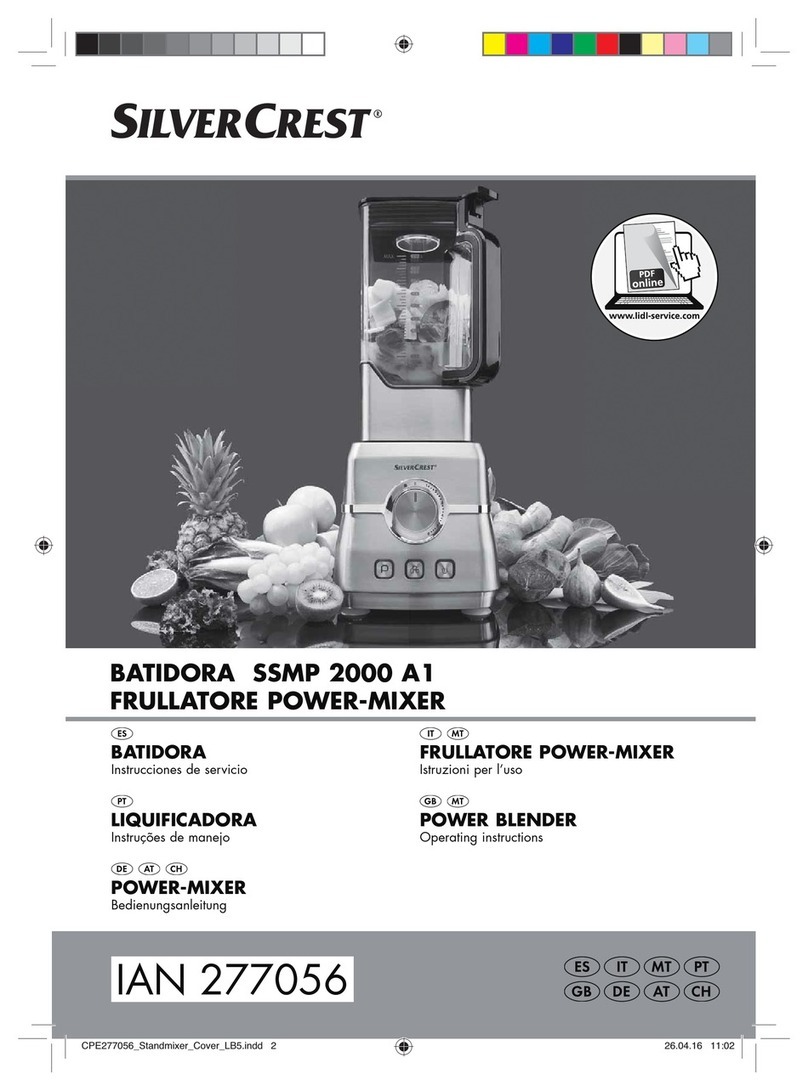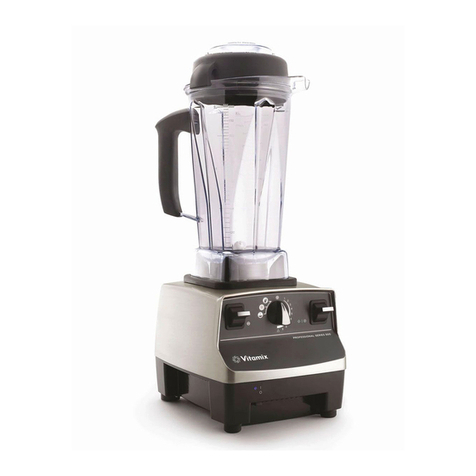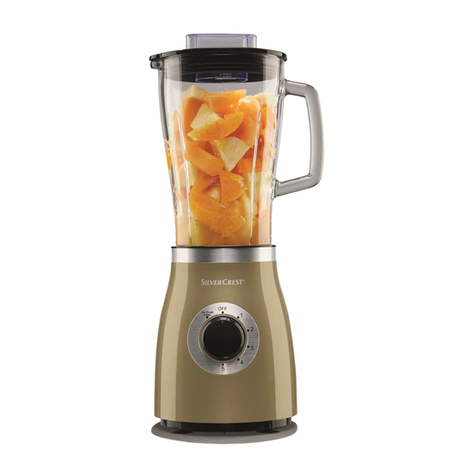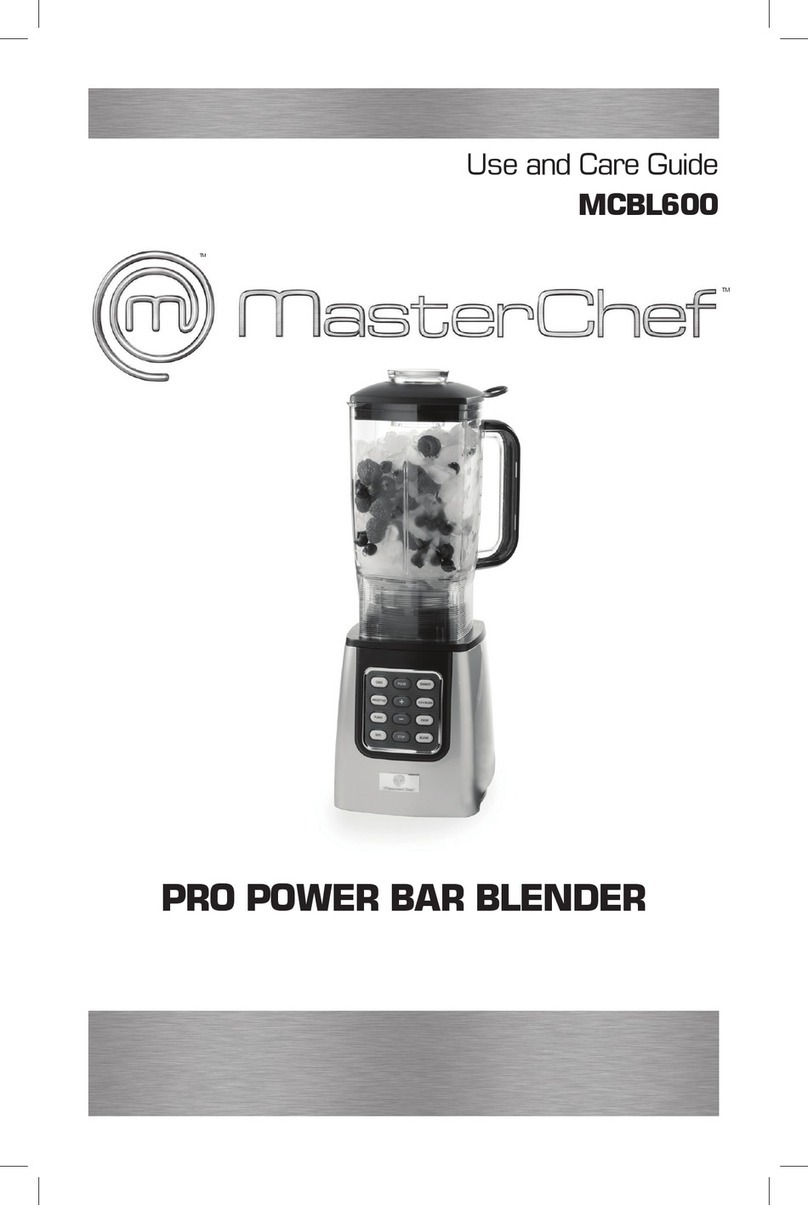
INDICE
01 - Tapa
02 - Vaso
03 - Anillo del Vaso
04 - Anillo Soporte del
Motor
05 - Gabinete
06 - Base
07 - Pies
08 - Interruptor Encendido
09 - Interruptor Apagado
10 - Tapón de la tapa
2. COMPONENTES Y CARACTERÍSTICAS TÉCNICAS
FIGURA 01
1. INTRODUCCIÓN
Este producto fue desarrollado para el uso en cocinas
comerciales. Se uliza en, por ejemplo, restaurantes,
cannas, hospitales, panaderías, carnicerías y similares.
La ulización de esta máquina no es recomendada cuando:
- El proceso de producción sea de forma connua en escala
industrial;
- El local de trabajo sea un ambiente con atmósfera corrosiva,
explosiva, contaminada con vapor, polvo o gas.
1.1 Seguridad
Para evitar accidentes, lesiones graves o daños a la máquina,
se deberán tener en cuenta las siguientes instrucciones:
1.1.1 Nunca ulice la máquina con ropas o pies mojados y/o
sobre superficies húmedas o mojadas. Jamás la sumerja en
agua ni direccione chorro de agua hacia la misma.
1.1.2 Si la máquina ha sufrido una caída, está abollada,
dañada o no enciende, es necesario llevarla a un Servicio
Técnico Autorizado – ATA para revisión, reparación o ajuste.
1.1.3 La ulización de accesorios no recomendados por el
fabricante pueden ocasionar lesiones en el usuario.
1.1.4 Mantenga las manos o cualquier utensilio alejados de
las partes en movimiento.
1.1.5 Nunca use ropas con mangas anchas, principalmente
en los puños, durante la operación.
1.1.6 Verifique que la tensión de la máquina sea igual a la de
la red eléctrica y que la misma esté debidamente conectada
a la descarga a erra.
1.1.7 Siempre coloque la Tapa de la licuadora antes de
encenderla.
1.1.8 Esté atento al vaso mientras la licuadora esté en
funcionamiento. Si se suelta, apague inmediatamente la
máquina.
1.1.9 Al mezclar líquidos calientes, remueva el Tapón de la
Tapa y mantenga las manos alejadas del orificio.
1.2.0 No use la máquina al aire libre.
1.2.1 No deje su licuadora funcionando sin supervisión.
1.2.2 Nunca toque las Cuchillas si la máquina está
funcionando.
1.2.3 Al realizar la instalación eléctrica de la máquina,
conecte el cable a erra según las normas de seguridad
locales.
1.2.4 Para su seguridad la temperatura de los productos
procesados no debe ser superior a los 40 grados C.
Esta máquina no es apta para ser ulizada por niños
ni personas con discapacidad sica, sensorial o psíquica,
o que carezcan de la experiencia y los conocimientos
necesarios; excepto cuando lo hagan bajo la supervisión de
una persona responsable de su seguridad o que hayan sido
instruidos en el manejo.
Recomendamos que se vigile a los niños para no
permirles jugar con la máquina.
Desconecte el equipamiento de la red eléctrica cuando:
no esté en uso, antes de limpiarlo, al sacar o colocar
accesorios, antes del servicio de mantenimiento o antes de
cualquier po de servicio.
No use el equipo cuando tenga el cable o el enchufe
damnificado. Si el enchufe estuviera damnificado,
sustuya el cable damnificado por otro que respete
lasespecificaciones técnicas y de seguridad. Esta sustución
deberá ser hecha por un profesional calificado.
En caso de emergencia, rere el enchufe del
tomacorriente.
Nunca use chorros de agua directamente sobre la
máquina.
1. INTRODUCCIÓN .............................7
1.1 Seguridad ................................................7
2. COMPONENTES Y CARACTERÍSTICAS
TÉCNICAS ..........................................7
3. INSTALACCIÓN Y PRÉ-OPERACIÓN ..8
3.1 Posicionamiento ..........................8
3.2 Instalación Electrica .................................8
3.4 Pre-operación ..........................................8
4. OPERACIÓN ...................................8
4.1 Accionamiento .........................................8
4.2 Procedimiento para Operación ................8
5. LIMPIEZA .......................................9
6. MANUTENCIÓN .............................9
7. RESOLUCIÓN DE PROBLEMAS ........9
8. DIAGRAMA ELÉCTRICO ..................10
10 01
04
03
05
08
07
06
02
3. INSTALACCIÓN Y PRÉ-OPERACIÓN
3.1 Posicionamiento
Su equipamiento deberá estar posicionado y nivelado arriba
de una superficie seca, firme y con 850mm de altura.
3.2 Instalación Electrica
El enchufe de este aparato posee dos clavijas para
alimentación y una central para la toma a erra. Es obligatorio
que los tres puntos estén debidamente conectados antes de
poner en marcha el aparato.
Cuando recibir el equipamiento, verifique la tensión eléctrica
informada en la equeta ubicada en el cable eléctrico.
3.4 Pre-operación
• Verifique si el equipamiento está firme en la mesada.
• Antes de ulizar el aparato, limpie con agua y jabón
neutro todas las partes que entrarán en contacto con
el producto a procesar (lea el ítem 5 Limpieza).
3.4.1 Colocando el Vaso
El Vaso Nº 02 (Fig. 01) posee un sistema simples permiendo
una fácil y segura colocación. Para remover y recolocar basta
rarlo vercalmente para arriba por los manipulos.
Siempre remueva ó recoloque el vaso agarrándolo con
firmeza por sus manipulos.
Nunca re re ó coloque el Vaso con la licuadora pren-
dida.
3.4.2 Colocando la Tapa
El Vaso Nº 02 (Fig. 01) ene una tapa Nº 01 (Fig. 01) hecha
de goma atoxica que asegura un eficiente vedamiento
durante la operación.
3.4.3 Colocando la Sobre Tampa
La Sobre Tapa Nº 10 (Fig. 01) puede ser usada sea para
observar el procesamiento, sea para añadir ingredientes.
Para rerarla gírela en el sendo horario hasta que se suelte,
y después levántela, vea Figura abajo.
4. OPERACIÓN
4.1 Accionamiento
- Introduzca la enchufe en la toma.
- Para prender el equipo presione la llave Prender / Apagar
#08 (Fig.01) en la posición “I”.
- Para apagar el equipo presione la llave Prender / Apagar
#08 (Fig.01) en la posición “O”.
4.2 Procedimiento para Operación
Rere la Tapa del Vaso No 01 con su Sobre Tapa Nº 10 (Fig.
01). Con el equipo desligado coloque en el Vaso Nº 02 (Fig.
FIGURA 02
FIGURA 03
CARACTERÍSTICAS UNIDAD LIC-04LT LIC-06LT LIC-08LT LIC-10LT
Capacidad del Vaso L 4 6 8 10
Tensión V 220 220 220 220
Frecuencia Hz 60 60 60 60
Potencia del Motor CV 0,5 0,5 0,5 0,5
Rotación RPM 3500 3500 3500 3500
Altura mm 630 720 750 780
Ancho mm 275 310 330 340
Profundidad mm 260 300 320 330
Peso Neto Kg 9,50 9,60 9,80 10,00
Peso Bruto Kg 10,80 11,10 11,40 11,70
Tenga cuidado para que la Tapa esté debidamente colocada
sobre el Vaso. Vea la figura abajo.






